Test Bank for Managing Human Resources, 9th Canadian by Belcourt
$35.00
Test Bank for Managing Human Resources, 9th Canadian by Belcourt
- Description
- Reviews (0)
Description
You will receive this product immediate after placing the order
- Employers have to blend competitive challenges and employee concerns. Which of the following pairs these two aspects of management?
a. globalization and technology b. technology and privacy issues
c. job security and employee attitudes d. globalization and cost containment
ANSWER: b
- Which of the following is an increasing source of success for organizations?
- the knowledge, skills, and abilities of its top executives
- the knowledge, skills, and abilities of its employees
- the proper management of the knowledge, skills, and abilities of its employees
- the knowledge, skills, and abilities of HR professionals
ANSWER: b
- ABC Corporation wants to expand on its markets in its new strategic plan. The plan covers the use of key resources available to the firm, including technology, people, and access to capital. Which of the following would be a critical human capital component of the plan?
a. capital investments b. employees’ skills
c. new markets d. updated technology
ANSWER: b
- Dave Ulrich, a professor of management, is quoted as saying that, in terms of learning and development: “Learning capability is g times g….” What does this mean?
- an employee’s knowledge, measured as g, multiplied by the employer’s goodwill
- an organization’s goodwill multiplied by its generosity to employees in terms of salaries and benefits
- an organization’s grand image and brand multiplied by its goodwill
- an organization’s ability to generate new ideas multiplied by its adeptness at generalizing them throughout the company
ANSWER: d
- What are the components of human capital?
- employees’ skills, abilities, and behaviours
- employees’ knowledge, skills, and abilities
- employees’ knowledge, skills, and behaviours
- employees’ knowledge, abilities, and behaviours
ANSWER: b
- Why does effective management of human resources provide a firm with competitive advantage?
- because it is financially cheaper to acquire people versus other resources
- because people help to accelerate the use of technology
- because it is difficult to replicate how we manage people in organizations
- because it is easier to manage people versus other resources
ANSWER: c
- HRM plays an important role in organizations by balancing the sometimes competing demands of which of the following?
- competitive challenges and employee concerns
- international challenges and employee concerns
- employee concerns and employer challenges
- competitive and employee challenges
ANSWER: a
- Compared with the past, what are two new areas for HR managers today?
- streamlining costs and helping with organizational strategy
- managing administrative issues and streamlining costs
- managing administrative issues and adhering to employment laws
- adhering to employment laws and streamlining costs
ANSWER: a
- Which of the following is NOT a key benefit of corporate social responsibility?
a. avoiding lawsuits b. improving earnings
c. attracting more applicants d. improving pay for employees
ANSWER: d
10.In today’s highly competitive environment, managing organizational change has become which of the following?
- a core competency of the organization
- a product of globalization and technological advancement
- a proactive method of downsizing
- the preferred method of reacting to a decrease in organizational performance
ANSWER: a
11.What was the first major trade agreement of the twentieth century to establish rules and guidelines for global commerce?
- NAFTA (North American Free Trade Agreement)
- GATT (General Agreement on Tariffs and Trade)
- FTAA (Free Trade Area of the Americas)
- APEC (Asia Pacific Economic Cooperation)
ANSWER: b
12.Company A has decided to hire someone outside the company to perform tasks that could be done internally. What is this practice called?
a. contracting b. outplacement
c. employee leasing d. outsourcing
ANSWER: d
13.Which organization has the BEST chance of implementing a successful change initiative?
- one that has ensured the employees are not overburdened with work relating to the change and have time to focus on their jobs
- one that has been very positive and relaxed throughout, ensuring not to establish a sense of urgency and always reporting positive effects
- one that has ensured good news is shared and the change victory is celebrated as soon as some indicators appear positive
- one that has ensured the changes are aligned with the organizational culture in important ways
ANSWER: d
14.The importance of Six Sigma to HR extends to all of the following EXCEPT which one?
a. performance management b. employee benefits
c. training d. communication
ANSWER: b
15.HRISs in some organizations help managers to connect with employees and with the HR data they need. What type of technological effect is this?
a. relational b. operational
c. transformational d. configurational
ANSWER: a
16.HRISs in some organizations, such as Corning Inc., are changing the way HR processes are designed and executed. What type of technological effect is this?
a. relational b. operational
c. transformational d. configurational
ANSWER: c
17.Organization A is attempting to foster proactive change within the firm. This organization is forming teams and extending its processes to include training, performance management, communication, culture, and even rewards. The organization hopes to improve its ability to catch mistakes before they happen. What is Organization A implementing?
a. Six Sigma b. continuous improvement
c. reengineering d. total quality management
ANSWER: a
18.Organization C is attempting to manage reactive change within the organization. This organization is radically changing every process through redesigning and rethinking from the ground up. The firm needs a dramatic change in order to survive. What is Organization C implementing?
a. Six Sigma b. continuous improvement
c. reengineering d. total quality management
ANSWER: c
19.Which of the following is a key motivator for offshoring?
a. increased productivity b. better just-in-time operations
c. better access to technology d. lowered labour costs
ANSWER: d
20.XYZ Inc. decided to lay off a relatively large proportion of their employees due to poorer-than-anticipated financial performance. What is this an example of?
a. proactive change b. transformational change
c. transitional change d. reactive change
ANSWER: d
21.In an effort to take advantage of a market opportunity, Apple created the iPhone in open-source format so that anyone can develop and sell an iPhone application. What is this an example of?
a. proactive change b. reactive change
c. managing change d. transformational change
ANSWER: a
22.ABC Inc. is planning to sell its products to new markets outside North America in anticipation of changes in NAFTA. What type of change management is ABC Inc. practising?
a. inertia b. proactive
c. reactive d. passive
ANSWER: b
23.Which of the following is an example of corporate social responsibility?
- providing career counselling to outsourced employees to increase their ability to find work
- installing noise-reduction baffling in plants to decrease anticipated community complaints
- sharing knowledge freely throughout the organization to improve employee efficiency and workflow
- providing speed-reading courses for front-line staff to improve their abilities in absorbing new information
ANSWER: b
24.Which type of work would a knowledge worker most likely engage in?
- deciding which type of fertilizer to buy wholesale for a landscaping business
- counting the number of grocery items in carts leaving a wholesale store
- monitoring children on new daycare playground equipment
- installing new ink cartridges in colour photocopiers in an office environment
ANSWER: a
25.Information technology impacts HRM practices in several important ways. Which of the following is one such way?
- Paper waste from employee files is drastically decreased.
- Convenience in general has increased.
- Employee recording of all types is carried out much faster.
- Many HR functions can now be considered “self-serve.”
ANSWER: d
26.Which of the following is a critical demographic-related problem facing Canadian firms?
a. an increasingly homogenous population b. retirement of baby boomers
c. migration from Ontario d. increasing salaries for employees
ANSWER: b
27.What are millennials also known as?
a. Generation A b. Generation B
c. Generation X d. Generation Y
ANSWER: d
28.ABC Bank is experiencing rapid retirement of baby boomers. The bank needs to retain its employment levels because of the volume of work, and it does not want to increase the workload of its employees. Which of the following is a good strategy for the bank to pursue to address this situation?
- Do nothing as the situation will rectify itself.
- Offer higher compensation packages to attract qualified candidates.
- Downsize the firm to save on labour costs.
- Increase production efforts so as to gain more revenue.
ANSWER: b
29.Which of the following is a key benefit for organizations when they rehire retirees?
a. lower health care costs b. better strategic planning
c. improved group performance d. lower turnover
ANSWER: d
30.Which of the following is NOT an approach generally used by organizations to try to lower labour costs?
- employee development
- outsourcing
- employee leasing
- relocating aspects of their operations to countries in the developing world
ANSWER: a
31.Which of the following is an application of “big data” and workforce analytics in human resources management?
- using trade data to predict unemployment figures
- using job applicant data to predict performance
- using sales data to segment markets
- using exit interviews to predict unemployment figures
ANSWER: b
32.In an effort to prevent downsizing its employees, ABC Inc. has asked its staff to accept reduced pay. What strategy is ABC Inc. using?
a. furloughing b. employee leasing
c. reduced downsizing d. outsourcing
ANSWER: a
33.Which statement best reflects the current view on the efficacy of offshoring as a cost reduction measure?
- While organizations can save with this practice, hidden costs, such as productivity loss during the transition, can chew up much of the financial gains.
- The practice of offshoring has been one of the most positive HR trends of the past ten years.
- The continuous shifting of global economies makes offshoring a necessary function for organizations to survive.
- Offshoring only works if top managers begin early in the process to plan their key strategies, such as alternative talent pools and workforce training.
ANSWER: a
34.ABC Corporation wants to contain its costs while allowing it to maintain working relationships with the employees while shifting administrative costs to another firm. What is this practice an example of?
a. professional employer organization b. gain sourcing
c. employee leasing d. outsourcing
ANSWER: c
35.Which of the following is a major strength of employee leasing?
- Employee leasing shifts employment costs to the PEO.
- With employee leasing, the PEO allows organizations to increase their productivity.
- Employee leasing allows organizations to offer better job security through the strength of the PEO.
- With employee leasing, the PEO can manage employee issues.
ANSWER: a
36.What is the Canadian workforce expected to exhibit by 2031?
- It is expected to exhibit about the same demographic mix as it does today.
- It is expected to exhibit a decrease in ethnic diversity.
- It is expected to exhibit an increase in ethnic diversity.
- It is expected to exhibit a decrease in retirements.
ANSWER: c
37.Which of the following trends is causing a major organizational concern that the expertise of employees will be rapidly drained from their companies?
- Generation nexus is thus far not demonstrating a dedication to training and education.
- There is an increase of uneducated women entering the workforce.
- Recruitment of lower-skilled immigrant workers is increasing.
- Large proportions of some workforces are nearing retirement.
ANSWER: d
38.Which generation should organizations target the most for recruitment with the use of social media?
a. baby boomers b. echo boomers
c. Generation X d. Generation Z
ANSWER: d
39.Which statement best describes the relationship among gender, education, and pay?
- Women generally earn less than men do? however, when they have an advanced degree they earn the same amount as men.
- Men and women generally earn the same amount except when neither group has any higher education.
- Women consistently and in every category earn less than men with an equivalent amount of education.
- Men with a university degree earn approximately the same as women with an advanced degree.
ANSWER: c
40.Many Canadian firms are shifting some of their work and jobs to overseas locations. What is this business practice called?
a. nearshoring b. offshoring
c. employee leasing d. downsizing
ANSWER: b
41.Which of the following groups is responsible for building an organization’s skilled and motivated workforce?
a. HR managers b. line managers and supervisors
c. department managers d. HR and line managers
ANSWER: d
42.Which of the following is a key responsibility of the human resources manager?
- ensuring the credit rating of the organization
- balancing the organization’s accounts
- policy formulation and implementation
- securing new markets
ANSWER: c
43.What are the competencies of the human resources manager?
- business mastery, HR mastery, and executive mastery
- business mastery, HR mastery, and personal mastery
- business mastery, HR mastery, personal credibility, and change mastery
- change mastery, personal credibility, union mastery, and HR mastery
ANSWER: c
44.What is the changing nature of the HR manager’s role increasingly focused on?
- policy formulation
- international issues
- privacy issues, global management issues, HR planning, and downsizing issues
- basic practices like staffing, but also policy development, employee advocacy, and advice
ANSWER: d
45.Which of the following best summarizes the competency model for HR professionals?
- HR professionals require change mastery, HR mastery, personal credibility, and business mastery.
- HR professionals require HR mastery, business mastery, global acumen, and change mastery.
- HR professionals require IT mastery, HR mastery, business mastery, and ethics.
- HR professionals require IT mastery, HR mastery, global acumen, and change mastery.
ANSWER: a
Scenario 1.1
Canada Proud is a small food processing company located in northern British Columbia. Recently, it has faced pressures from competitors who have been able to produce similar products more cheaply. The owners of Canada Proud are looking into the possibility of starting a branch of the company in Mexico. Trade agreements among countries around the globe help companies like Canada Proud in becoming globally competitive. However, the company is aware that there may be opposition to such a move, especially if it affects the future viability of its current operations.
46.Refer to Scenario 1.1. Which trade agreement would be applicable in Canada Proud’s case?
- General Agreement on Tariffs and Trade (GATT)
- North American Free Trade Agreement (NAFTA)
- North American Economic Cooperation (NAEC)
- Canada–Mexico Free Trade Agreement (CMFTA)
ANSWER: b
47.Refer to Scenario 1.1. How can locating a new division in Mexico help the company become more competitive?
- It can reduce labour costs.
- It will help the image of the company.
- It will help the company become larger and better able to challenge competitors.
- It will ensure access to Latin American markets for its products.
ANSWER: a
48.Refer to Scenario 1.1. What would be a big challenge for Canada Proud’s HRM professionals if the company decides to open a division in Mexico?
- convincing the Canadian government that it would be better to do business in Mexico
- acquiring the physical facilities in Mexico
- laying off workers in its current operations
- hiring employees in Mexico with the relevant skills
ANSWER: d
49.Refer to Scenario 1.1. One way to avoid or reduce criticism of potential exploitation of Mexican workers through the use of sweatshops and low wages would be to practise “good citizenship.” What is the term used to describe such “good citizenship”?
a. corporate social responsibility b. corporate good citizenship
c. organizational citizenship d. corporate philanthropy
ANSWER: a
50.Refer to Scenario 1.1. How can setting up a branch in Mexico affect the future viability of Canada Proud’s current operations?
- Trade agreements do not allow companies to run exactly the same operations in two countries.
- Public pressure in Canada would force the closure of the current operations.
- The cost advantages in Mexico may lead the company to close its operations in British Columbia.
- The pressure to manage more than one set of operations is always too much for a single company.
ANSWER: c
Scenario 1.2
The leadership at ABS Inc. has been pondering on the use of higher levels and intensity of technology in their operations. The organization has a close knit group of about 200 employees and a strong organizational culture. It is worried that its employees could become dependent on technology and this would affect the culture. The firm is also worried about the costs to implement the technology and whether the employees can be trained.
51.Refer to Scenario 1.2. While ABS is worried about technology’s effect on its culture, there is another potentially negative effect for some workers. What is it?
- There would be less need for unskilled workers.
- The organization would become more inefficient.
- The image of the firm would be adversely affected.
- There would be pay cuts.
ANSWER: a
52.Refer to Scenario 1.2. What is a key advantage for ABS Inc. if they install better HRISs?
- They will outperform all competitors.
- HR personnel can concentrate on strategic issues versus routine.
- Employees will be better paid.
- Application rates will increase.
ANSWER: b
53.To achieve sustainable competitive advantage through people, an organization’s employees’ skills, knowledge, and abilities must be widely available in the labour market.
- True
- False
- True
- False
ANSWER: False
54.The knowledge, skills, and capabilities that impact a company’s performance but do not necessarily show up on its balance sheet are known as human capital.
- True
- False
- True
- False
ANSWER: True
55.Organizations own their human capital, including investments made in training and development.
- True
- False
- True
- False
ANSWER: False
56.Human resource management issues can be managed by human resource managers only.
- True
- False
- True
- False
ANSWER: False
57.HR professionals do not need to fully understand the economic and financial matters pertaining to their organization.
- True
- False
- True
- False
ANSWER: False
58.One of the main reasons change efforts fail is that organizations do not create a sense of urgency.
- True
- False
- True
- False
ANSWER: True
59.Human capital is a tangible asset.
- True
- False
- True
- False
ANSWER: False
60.All departments are responsible for managing employees.
- True
- False
- True
- False
ANSWER: True
61.To be successful, organizations should seek to align their processes with customer needs.
- True
- False
- True
- False
ANSWER: True
62.“Six Sigma” refers to the six criteria for the Malcolm Baldrige National Quality Award.
- True
- False
- True
- False
ANSWER: False
63.Organizations known for product and service quality recognize the importance of employees in fostering quality improvements.
- True
- False
- True
- False
ANSWER: True
64.Employee motivation, teamwork, corporate culture, employee education, performance management, and rewards are the six aspects in the quality improvement program known as “Six Sigma.”
- True
- False
- True
- False
ANSWER: False
65.Reengineering is a statistical method of translating customer needs into separate tasks and defining the best way to perform each task.
- True
- False
- True
- False
ANSWER: False
66.In the past, HR departments focused mainly on managing administrative issues.
- True
- False
- True
- False
ANSWER: True
67.To successfully manage change, organizations, particularly in fast-growing industries, should wait to see how external forces impact performance, and then develop a plan to react to those changes.
- True
- False
- True
- False
ANSWER: False
68.HR managers help the organization with strategy formulation and implementation.
- True
- False
- True
- False
ANSWER: True
69.“Brexit” is the term used to refer to the United States renegotiating NAFTA.
- True
- False
- True
- False
ANSWER: False
70.Employees and the public at large are demanding that employers demonstrate greater social responsibility.
- True
- False
- True
- False
ANSWER: True
71.The introduction of advanced technology tends to increase the number of jobs that require basic skills.
- True
- False
- True
- False
ANSWER: False
72.Because of the “dot-com bust,” the initial explosive success of Internet business declined drastically and is still in a moderate decline.
- True
- False
- True
- False
ANSWER: False
73.In general, many companies are realizing diminished demand for “touch labour” and an increasing demand for “knowledge workers.”
- True
- False
- True
- False
ANSWER: True
74.A human resource information system (HRIS) provides current and accurate data for control and decision making by managers.
- True
- False
- True
- False
ANSWER: True
75.Because of its importance, HR managers in progressive organizations are frequently assuming sole responsibility for the implementation of information technology.
- True
- False
- True
- False
ANSWER: False
76.An important hidden cost of layoffs is a loss of institutional memory and trust in management.
- True
- False
- True
- False
ANSWER: True
77.Labour costs are one of the largest expenditures of many organizations.
- True
- False
- True
- False
ANSWER: True
78.Outsourcing has been one of the most prominent trends in HR for the past 15 years.
- True
- False
- True
- False
ANSWER: True
79.Almost all Canadian employers have engaged in some type of downsizing.
- True
- False
- True
- False
ANSWER: False
80.Methods of reducing labour costs include downsizing, outsourcing, and employee leasing.
- True
- False
- True
- False
ANSWER: True
81.Off-shoring is also called “global sourcing.”
- True
- False
- True
- False
ANSWER: True
82.An increased reliance on outsourcing is likely to increase the morale and productivity of the employees that remain on the job.
- True
- False
- True
- False
ANSWER: False
83.Employee leasing refers to employing workers in their homes rather than within the traditional office environment.
- True
- False
- True
- False
ANSWER: False
84.Employee leasing shifts administrative costs from the company to a professional employer organization.
- True
- False
- True
- False
ANSWER: True
85.Employee productivity is the result of a combination of employees’ abilities, motivation, and work environment, and the technology they have to work with.
- True
- False
- True
- False
ANSWER: True
86.It is quite possible that when managers increase costs, productivity often rises.
- True
- False
- True
- False
ANSWER: False
87.Older workers now are choosing to work longer.
- True
- False
- True
- False
ANSWER: True
88.Today, a larger percentage of university graduates are women compared to men.
- True
- False
- True
- False
ANSWER: True
89.Women are heavily concentrated in managerial occupations.
- True
- False
- True
- False
ANSWER: False
90.The most recent census (2016) shows that more Canadians have a university or college education than in the past.
- True
- False
- True
- False
ANSWER: True
91.Managing diversity means ensuring all employees are treated equally.
- True
- False
- True
- False
ANSWER: False
92.Managers in general and HR managers in particular should be concerned with the makeup and expectations of their employees.
- True
- False
- True
- False
ANSWER: True
93.Employees today are less likely to define success only in terms of financial gain.
- True
- False
- True
- False
ANSWER: True
94.Family-friendly companies may risk alienating those employees who cannot utilize benefits provided.
- True
- False
- True
- False
ANSWER: True
95.Most human resources issues have little relevance for line managers.
- True
- False
- True
- False
ANSWER: False
96.Some companies report that offering family-friendly benefits is so successful there are virtually no drawbacks.
- True
- False
- True
- False
ANSWER: False
97.One of the responsibilities of HR managers is to provide advice and counsel to line managers.
- True
- False
- True
- False
ANSWER: True
98.An HR manager is typically expected to function as an in-house consultant to supervisors, managers, and executives.
- True
- False
- True
- False
ANSWER: True
99.Because HR managers function in an advisory role, they are responsible for issuing policy revisions and implementing them.
- True
- False
- True
- False
ANSWER: False
100.Top management increasingly expects HR managers to reduce their level of involvement in the overall strategy of the organization and concentrate on improving administrative efficiency.
- True
- False
- True
- False
ANSWER: False
101.One of the roles of HR managers is to act as employee advocates despite their positions as managers.
- True
- False
- True
- False
ANSWER: True
102.Business mastery is a key competency of HR managers.
- True
- False
- True
- False
ANSWER: True
103.What are the six competitive challenges facing human resources management departments?
ANSWER: The six competitive challenges facing human resources departments are (1) globalization, (2) embracing new technology, (3) managing change, (4) developing human capital, (5) responding to the market, and
(6) containing costs.
(1) First, in order to grow and prosper, many companies are seeking business opportunities in global markets. HR issues underlie concerns related to managing diverse cultures, geographies, laws, and business practices.
(2) Second, the introduction of advanced technology has created a shift from touch labour to knowledge workers, impacting the way in which workers are managed. In addition, technology has altered the methods of collecting employment information, speeding up the processing of that data, and improving the process of internal and external communication.
(3) Third, to become faster and more adaptable, many organizations are seeking ways to manage change. Programs such as TQM, downsizing, reengineering, outsourcing, and the like are examples of changes that organizations are making to modify the way they operate to be more successful. Each of these change efforts depends heavily on the adjustment of HR practices to facilitate and manage evolving issues related to an organization’s workforce.
(4) Fourth, organizational success is increasingly recognized as resting upon a firm’s ability to manage human capital. HR practices are the fundamental tools by which organizations build, enhance, and maintain their stock of human capital.
(5) Fifth, meeting the demands of the market is an important criterion for organizational success. Management innovations such as TQM and reengineering represent two prominent approaches to responding to customer demands.
(6) Finally, containing costs, especially labour costs, is an important component of organizational success. As a result, many firms have engaged in initiatives such as downsizing, outsourcing, and employee leasing as a means to realize greater cost controls. Each of these practices has significant implications for HR practices. For example, during a downsizing initiative, HR has an obligation to help maintain a healthy relationship between a company and its employees through services such as outplacement.
104.Describe the key competencies of HR managers and professionals.
ANSWER: HR managers and professionals are expected to have four key competencies:
- Business mastery. HR professionals need to know the business of their organizations. This may involve aspects of business acumen, customer and client orientation, and a good understanding of external relations. They require an understanding of the organization’s economic and financial capabilities so that they can become a key member of the team of business managers to develop the firm’s strategic direction. HR professionals also need skills in external relations focused on their customers.
- HR mastery. HR professionals are the organization’s behavioural science experts. They need to be proficient in the core aspects of the field/HR function, including staffing, development, appraisals, rewards, team building, and communication.
- Change mastery. HR professionals must be able to recognize the need for change and understand how effective change can be implemented. Such change efforts should be grounded in HR managers’/professionals’ interpersonal skills and influence, their problem-solving skills, and their effective use of rewards systems, among others. They need to manage change processes so that their firm’s HR activities are effectively merged with the business needs of their organizations.
- Personal credibility. HR professionals must establish personal credibility in the eyes of internal and external stakeholders. Credibility and trust are earned through ethical personal relationships with one’s customers, demonstrating the values of the firm, standing up for one’s own beliefs, and being fair-minded when dealing with others.
Be the first to review “Test Bank for Managing Human Resources, 9th Canadian by Belcourt”
You must be logged in to post a review.



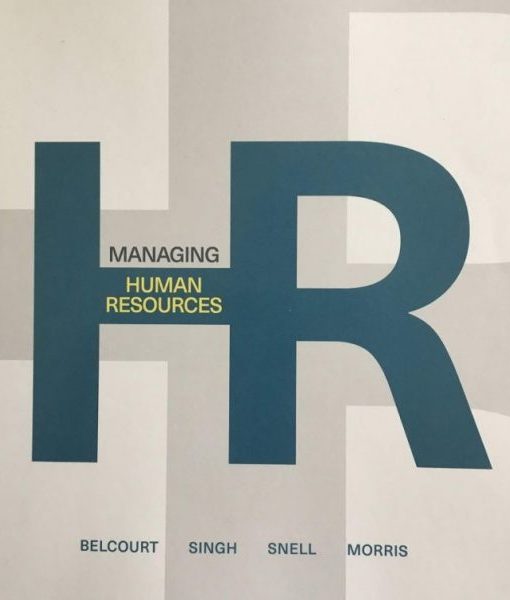
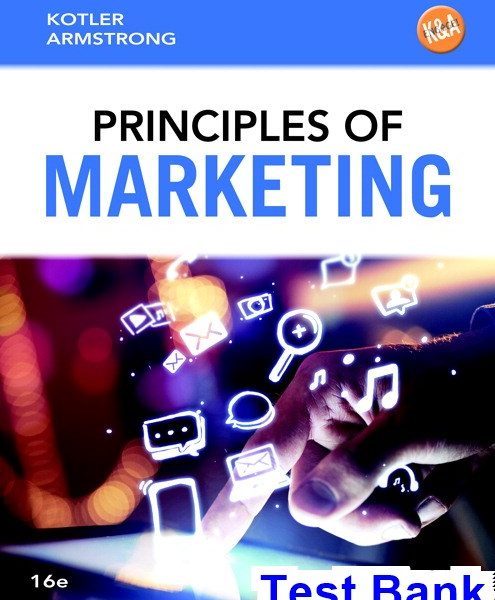


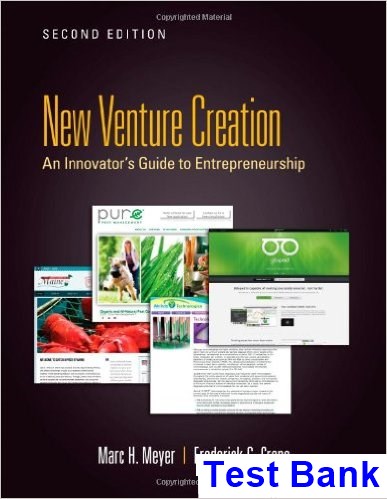
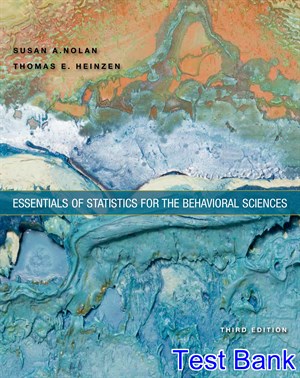
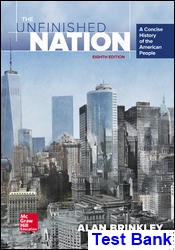
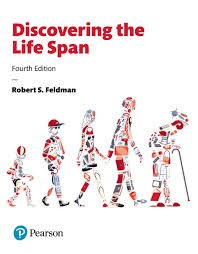
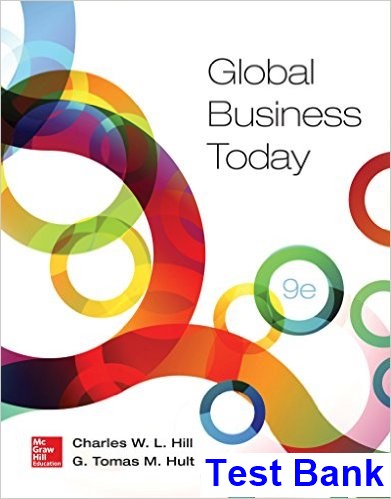
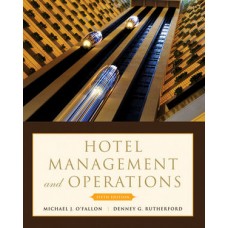
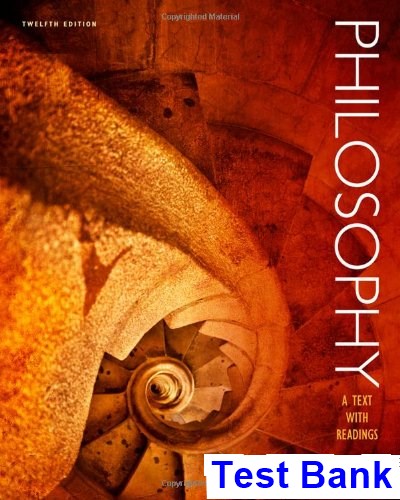
Reviews
There are no reviews yet.